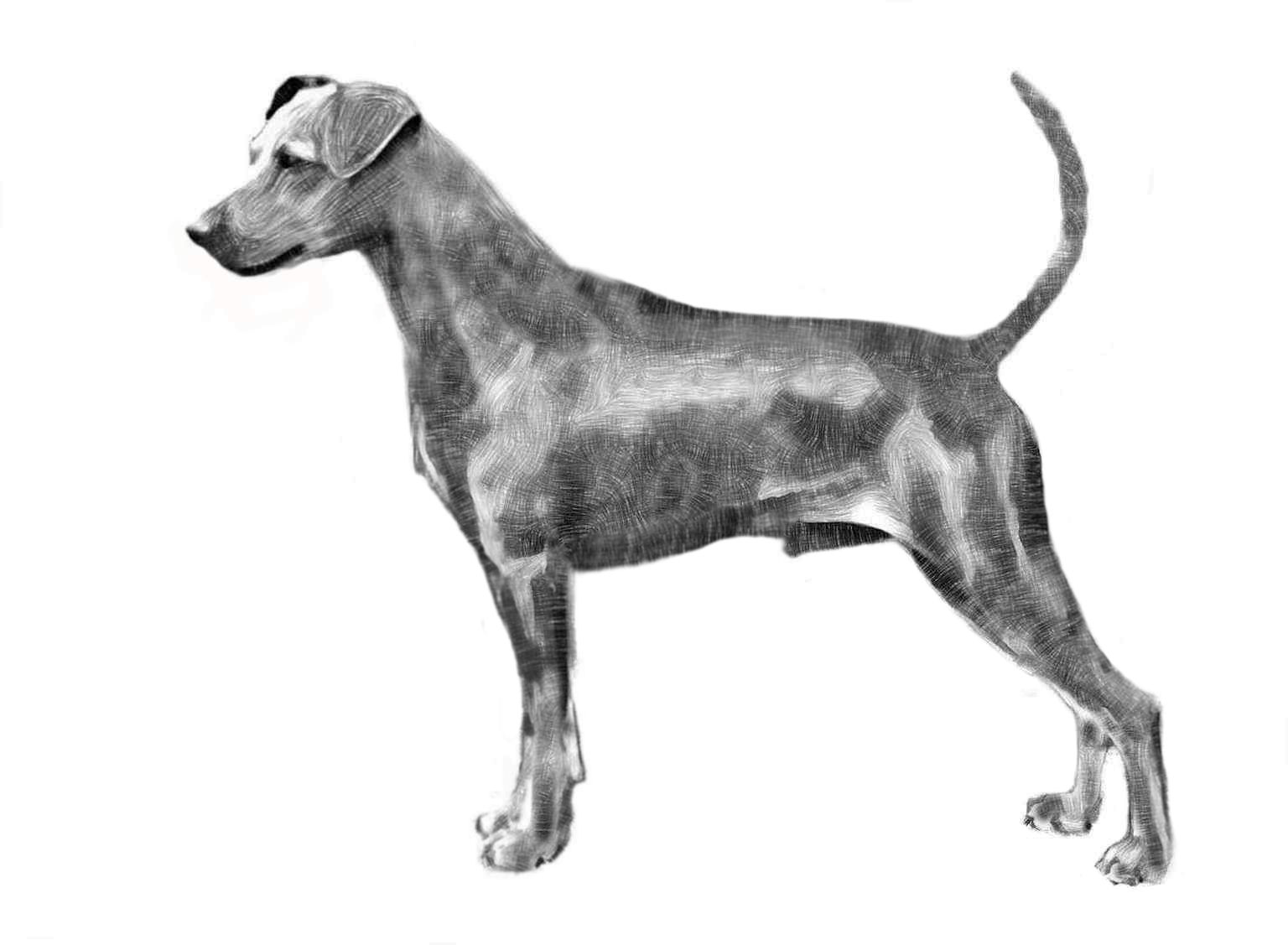German Pinscher Breed Standard
Last updated: 22 May 2009
A breed standard is the guideline which describes the ideal characteristics, temperament, and appearance of a breed and ensures that the breed is fit for function with soundness essential. Breeders and judges should at all times be mindful of features which could be detrimental in any way to the health, welfare or soundness of this breed.

Kennel Club, London 1994
-
Group:
Group 6 (Utility)
-
History:
-
General Appearance:
Well balanced, smooth coated, medium size with elegant and flowing outlines but strong and well muscled.
-
Characteristics:
Alert, good natured, playful. Loyal, watchful and fearless.
-
Temperament:
High spirited and self-possessed.
-
Head And Skull:
Seen from above and side resembles a blunt wedge. Strong but not heavy, elongated without pronounced occiput. Overall length in proportion to back (from withers to base of tail) is approximately 1:2. Top of muzzle parallel with extended line of unwrinkled flat forehead; slight but distinct stop. Cheek muscles strong but not prominent. Deep muzzle. Nose full and black; in reds, nose of corresponding shade. Lips tight and dark. Snippiness undesirable.
-
Eyes:
Dark, of medium size, oval and directed forward. Eye rims tight.
-
Ears:
Set high. V shaped, folded down close to head.
-
Mouth:
Jaws strong with a perfect, regular and complete scissor bite, i.e. upper teeth closely overlapping lower teeth and set square to the jaws.
-
Neck:
Elegant and strong. Neither short nor stout. Nape well arched. Skin of throat tight without dewlap.
-
Forequarters:
Well laid shoulder with good but flat muscle. Forelegs straight viewed from all sides, parallel elbows are close to body.
-
Body:
Chest moderately wide with flat ribs. Brisket extends below elbow. Forechest extends beyond point of shoulder. Compact and short coupled. Length of body approximately equal to height at withers. Back short and slightly sloping. Slightly rounded croup.
-
Hindquarters:
Seen from behind parallel, with sufficient width. Upper thigh slanted and strongly muscled. Good length and bend of stifle, hocks turning neither in nor out.
-
Feet:
Well arched, compact and cat-like with dark nails. Turning neither in nor out. Tough, hard pads.
-
Tail:
Docked: Docked to three [3] joints. Set and carried high.
Undocked: Set and carried high with an upward sweep. In overall balance with the rest of the dog.
-
Gait/Movement:
Free, well balanced and vigorous with good reach in front and strong rotary driving action from rear. Front and hind legs should not be thrown outwards. Topline should remain strong and firm. Hackney movement undesirable.
-
Coat:
Short and dense, smoothly fitting, glossy without bald spots.
-
Colour:
All solid colours from fawn (Isabella) to stag red in various shades. Black and blue with reddish/tan markings. In bi-coloured dogs sharply marked red/tan markings desirable. Markings distributed as follows: - at cheeks, lips, lower jaw, above eyes, at throat, at forechest as two triangles separated from each other, at metatarsus, forelegs, feet, inner side of hindlegs and vent region.
-
Sizes:
Height: 43-48 cms (17-19 ins) at withers.
-
Faults:
Any departure from the foregoing points should be considered a fault and the seriousness with which the fault should be regarded should be in exact proportion to its degree and its effect upon the health and welfare of the dog.
-
Notes:
Male animals should have two apparently normal testicles fully descended into the scrotum.
 For owners
For owners
 Members
Members
 Dogs Australia is a not-for-profit organisation advocating for the preservation of purebred dogs through ethical breeding.
It champions the highest standard of animal welfare through education and fostering dog-loving communities.
Internationally recognised and established in 1958 as the Australian National Kennel Council (ANKC),
the organisation promotes responsible dog ownership; maintains the ORCHID* heritable canine diseases database;
funds research into canine diseases; and supports state and territory-based member bodies.
Dogs Australia promotes breed conformation shows and community sports for dogs that fulfil a breed’s natural instincts.
Dogs Australia is a not-for-profit organisation advocating for the preservation of purebred dogs through ethical breeding.
It champions the highest standard of animal welfare through education and fostering dog-loving communities.
Internationally recognised and established in 1958 as the Australian National Kennel Council (ANKC),
the organisation promotes responsible dog ownership; maintains the ORCHID* heritable canine diseases database;
funds research into canine diseases; and supports state and territory-based member bodies.
Dogs Australia promotes breed conformation shows and community sports for dogs that fulfil a breed’s natural instincts.







